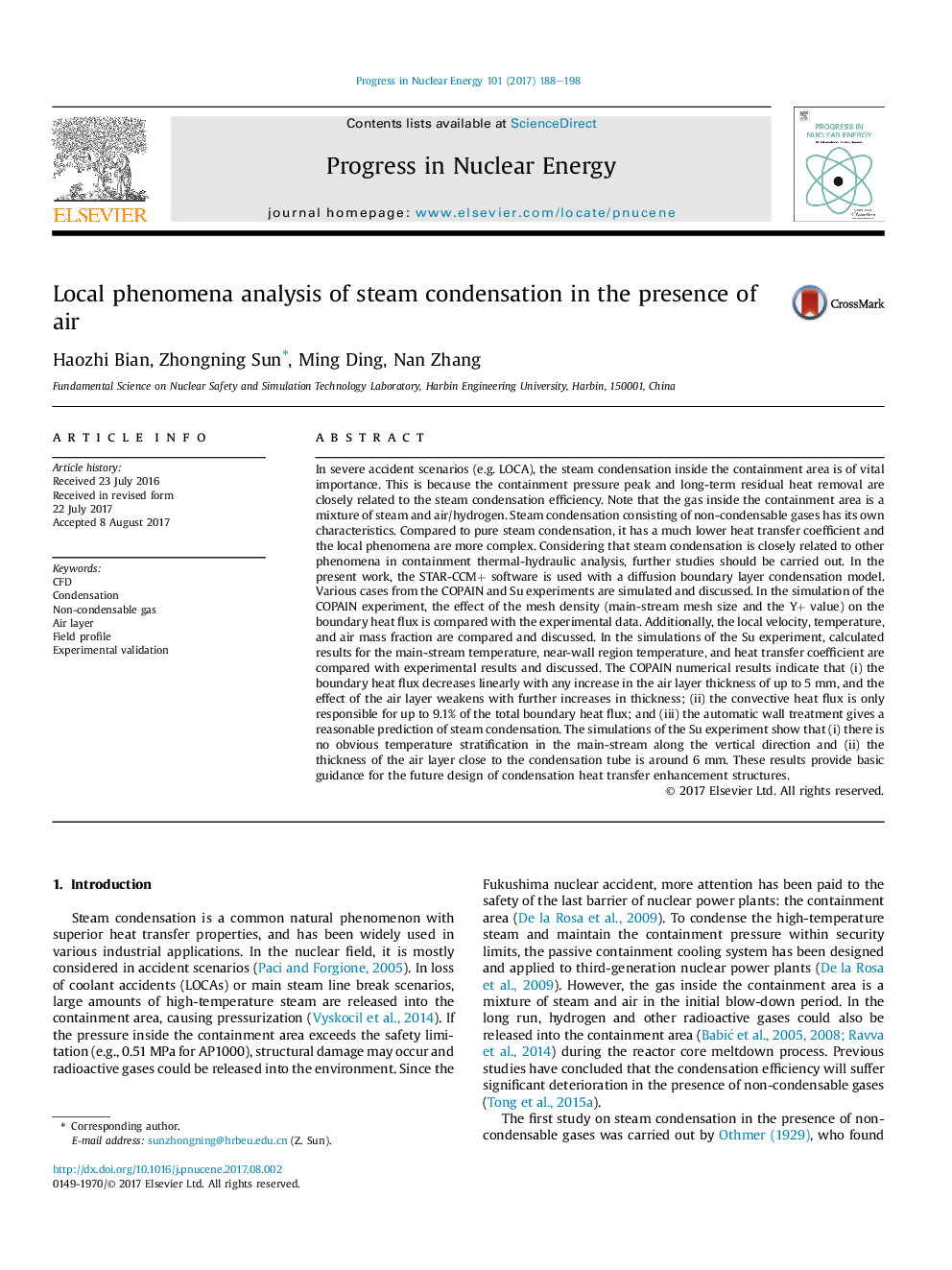| کد مقاله | کد نشریه | سال انتشار | مقاله انگلیسی | نسخه تمام متن |
|---|---|---|---|---|
| 5478003 | 1521737 | 2017 | 11 صفحه PDF | دانلود رایگان |
عنوان انگلیسی مقاله ISI
Local phenomena analysis of steam condensation in the presence of air
ترجمه فارسی عنوان
تجزیه و تحلیل پدیده محلی تراکم بخار در حضور هوا
دانلود مقاله + سفارش ترجمه
دانلود مقاله ISI انگلیسی
رایگان برای ایرانیان
کلمات کلیدی
موضوعات مرتبط
مهندسی و علوم پایه
مهندسی انرژی
مهندسی انرژی و فناوری های برق
چکیده انگلیسی
In severe accident scenarios (e.g. LOCA), the steam condensation inside the containment area is of vital importance. This is because the containment pressure peak and long-term residual heat removal are closely related to the steam condensation efficiency. Note that the gas inside the containment area is a mixture of steam and air/hydrogen. Steam condensation consisting of non-condensable gases has its own characteristics. Compared to pure steam condensation, it has a much lower heat transfer coefficient and the local phenomena are more complex. Considering that steam condensation is closely related to other phenomena in containment thermal-hydraulic analysis, further studies should be carried out. In the present work, the STAR-CCM+Â software is used with a diffusion boundary layer condensation model. Various cases from the COPAIN and Su experiments are simulated and discussed. In the simulation of the COPAIN experiment, the effect of the mesh density (main-stream mesh size and the Y+ value) on the boundary heat flux is compared with the experimental data. Additionally, the local velocity, temperature, and air mass fraction are compared and discussed. In the simulations of the Su experiment, calculated results for the main-stream temperature, near-wall region temperature, and heat transfer coefficient are compared with experimental results and discussed. The COPAIN numerical results indicate that (i) the boundary heat flux decreases linearly with any increase in the air layer thickness of up to 5Â mm, and the effect of the air layer weakens with further increases in thickness; (ii) the convective heat flux is only responsible for up to 9.1% of the total boundary heat flux; and (iii) the automatic wall treatment gives a reasonable prediction of steam condensation. The simulations of the Su experiment show that (i) there is no obvious temperature stratification in the main-stream along the vertical direction and (ii) the thickness of the air layer close to the condensation tube is around 6Â mm. These results provide basic guidance for the future design of condensation heat transfer enhancement structures.
ناشر
Database: Elsevier - ScienceDirect (ساینس دایرکت)
Journal: Progress in Nuclear Energy - Volume 101, Part B, November 2017, Pages 188-198
Journal: Progress in Nuclear Energy - Volume 101, Part B, November 2017, Pages 188-198
نویسندگان
Haozhi Bian, Zhongning Sun, Ming Ding, Nan Zhang,
